AirportSecurity
Latest
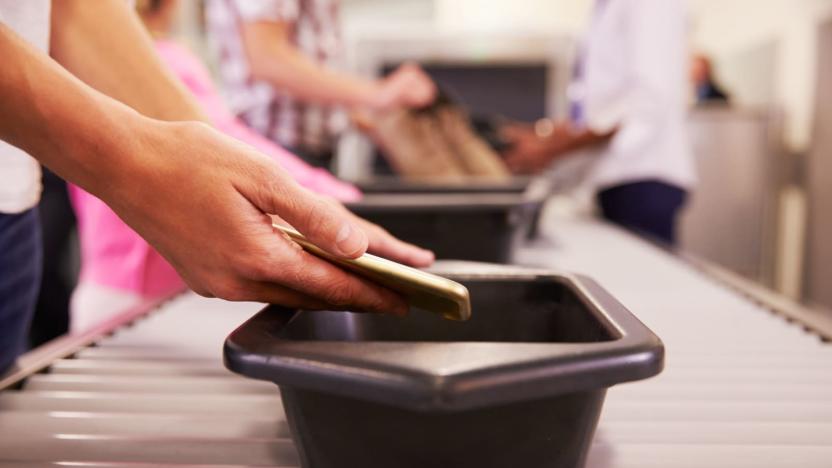
TSA plans wider expansion for 3D luggage-scanning machines
The TSA had already planned to expand its pilot program using specially-designed CT scanners to screen airline passenger luggage from tests in Phoenix and Boston to major airports in Chicago, Los Angeles and Washington-Dulles. By the end of 2019, they envisioned spreading 145 of these machines in security checkpoints across the country. But it seems the tests have gone so well that the agency is increasing its order to 200 scanners in the next year, the TSA chief told Congress today.
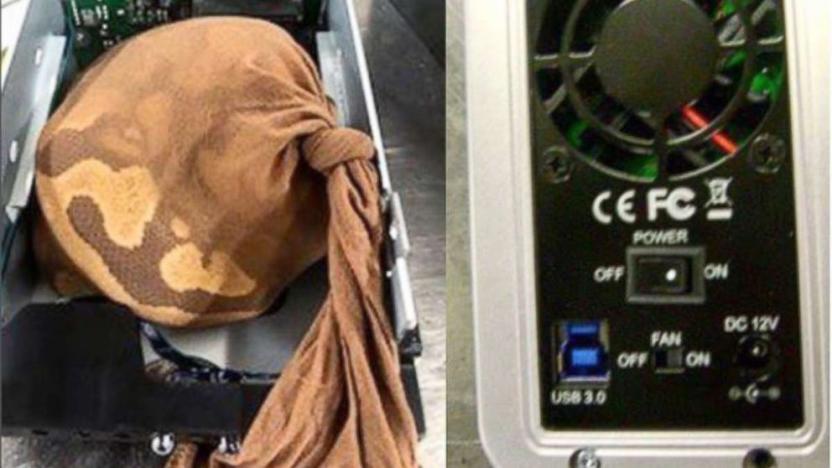
Snake hidden in hard drive fails to board Miami plane
Transport Security Administration (TSA) officials have intercepted a traveler at Miami International Airport who planned to illegally smuggle a snake en route to Barbados. The female passenger was prevented from boarding the flight after security agents discovered a Ball python was concealed within an external hard drive in her possession. To make matters even more bizarre, the snake was dressed in a nylon stocking.
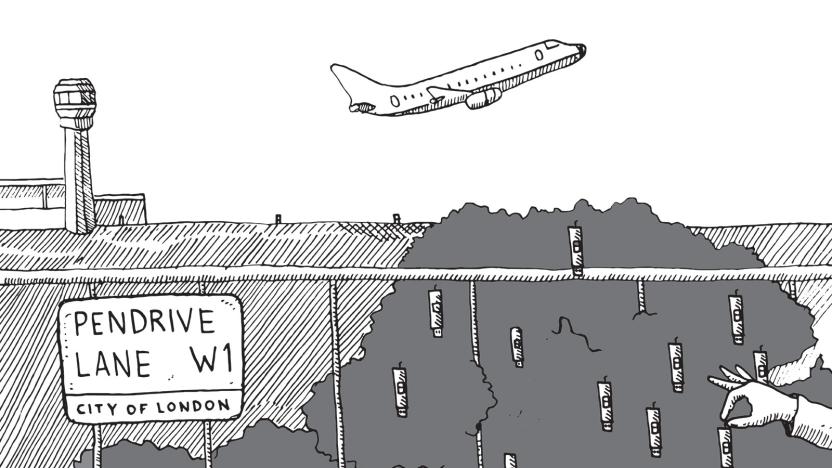
Critical Heathrow Airport security files found in the bushes
When you're unemployed, you tend to notice the world around you a bit more than the average working stiff. That's how a regular, unemployed fellow in London happened to find intimate and detailed security protocols and maps for London's main airport, Heathrow, lying on the ground in broad daylight The unnamed man noticed a USB stick in a row of bushes lining the sidewalk on Ilbert Street, along Queen's Park, in West London, so he grabbed it. It wasn't exactly outside the airport's security offices. That's eighteen miles from the airport, or about 40 minutes by car.
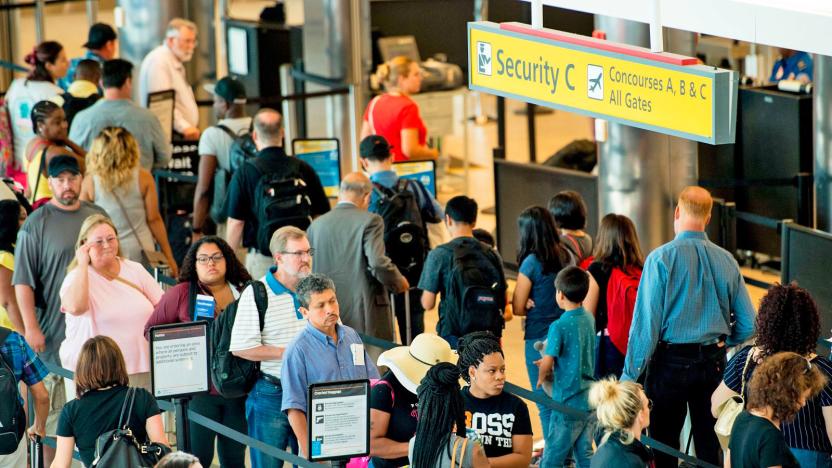
TSA requires separate screening of devices larger than a phone
We've been hearing for months that the TSA might increase domestic airport security measures this summer (they've already done so for international flights coming into the US), and now those procedures are here. The TSA is requiring "travelers to place all electronics larger than a cell phone in bins for X-ray screening in standard lanes." This program has been tested at 10 domestic airports and is now being implemented across the country.
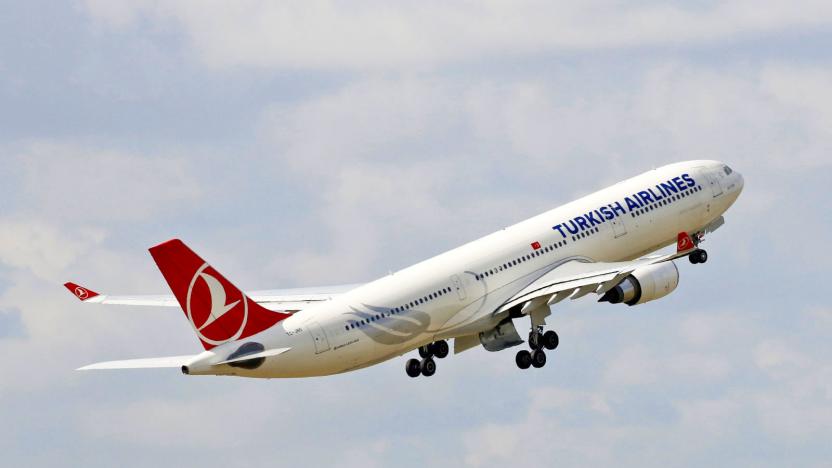
US exempts Emirates and Turkish Airlines from laptop ban
As of today, Emirates Airline and Turkish Airlines no longer have to abide by the "laptop ban" that prevented passengers from carrying on devices larger than smartphones on flights from Middle East airports to the US. The ban, which was originally enacted in March, still applies to six other airlines.
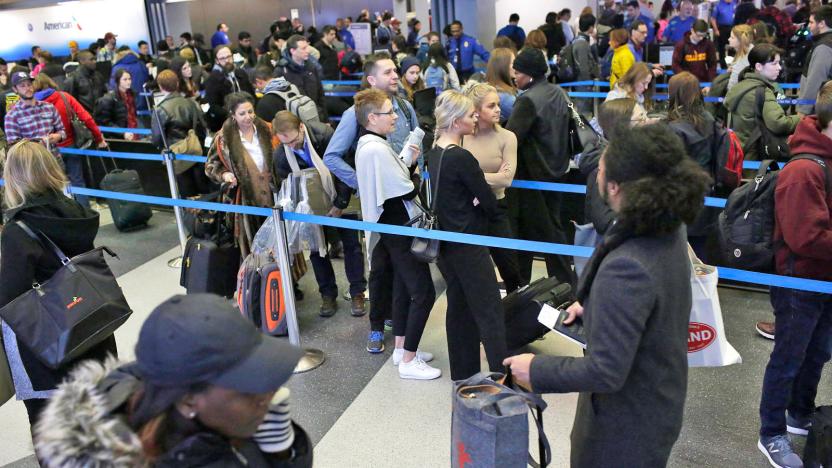
DHS won’t expand its laptop ban to all US-bound flights just yet
In a statement today, Homeland Security Secretary John Kelly announced expanded security measures for US-bound flights. Kelly said the new measures were in response to terrorist groups' "renewed interest" in targeting airlines. "We cannot play international whack-a-mole with each new threat. Instead, we must put in place new measures across the board to keep the traveling public safe and make it harder for terrorists to succeed," he said.
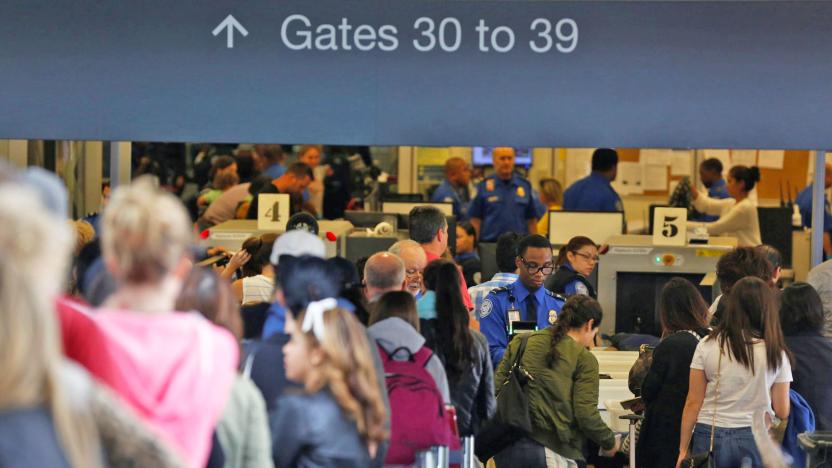
TSA may ask you to unpack tablets and cluttered carry-on bags
While it looks like the airline industry has successfully held off the US Department of Homeland Security's proposed laptop ban for now, the government will soon be giving carry-on bags an extra thorough inspection at airports around the country anyway. Starting after this summer's travel rush, the TSA is expected to implement a range of new policies that will likely lead to a lot more unpacking and re-packing at airport security checkpoints. Suddenly those automatic security screenings can't come soon enough.

The FAA just tested an FBI drone-finding system at JFK
Airports are getting more worried about civilian drones wandering into commercial airspace. While the object that struck a plane landing at Heathrow last month was almost certainly not a drone, security experts fear that unmanned aircraft loitering near airports could get sucked into an engine and bring down a whole plane. After multiple near-misses at JFK in the last two years, the FAA borrowed an FBI drone detection system and field-tested it at the international airport last week.

France's Toulouse-Blagnac airport to conduct NFC field trials for BlackBerry smartphones
Navigating through airport security is hardly the most fanciful way of kicking off a vacation, but this summer, a handful of frequent fliers in France will take part in a field trial that aims to streamline the process and make it a bit more enjoyable. Fifty lucky travelers armed with BlackBerry smartphones will take part in a pilot study that tests the authentication technology recently developed by Orange and SITA. Upon their arrival at the Toulouse-Blagnac airport, the handset's NFC-capable SIM card will serve as an access pass to the car park, the premium access zone for departures and even the private lounge area. Smartphone integration will provide travelers with real-time flight information, and it's said that the handset will even remember the location of one's vehicle in the car park. As the system is hardware-based, the identity verification technology will even work when the smartphone is turned off. The Toulouse-Blagnac airport aims to have a broader NFC implementation available by 2013-2014, which may allow users to board flights and pay for goods with their mobile device. To learn more about the vision, you'll find the PR after the break.

SITA and Orange develop NFC-based airport check-ins, let you bump the TSA (video)
You've been there before -- fumbling in-front of a non-enthused security agent, trying to download your fancy mobile boarding pass over an uncooperative network. It's that kind of awkwardness that SITA and Orange are trying to avoid with their NFC-based check-in solution. In their joint proof-of-concept, the duo embedded ticket credentials into an NFC-capable SIM card -- meaning phones without NFC circuitry can also use the tech -- which enables airport plebes to check-in, get through security, board planes and even enter lounges with just a wave of your phone. And because you're not futzing with loading a webpage, nor relying on a fussy image-based scanner, the tech should mean less time spent waiting at checkpoints. Writing that info onto the SIM has other advantages, as it can still be read even when your device runs out of juice. So, next time you're jet setting into Geneva -- you know, to deposit something totally non-nefarious into your Swiss bank account -- peep the demonstration area at SITA's HQ. Or, if you're not the globetrotting type, a video explaining all awaits after the break.

Google Maps 6.0 hits Android, adds indoor navigation for retail and transit
Google's already put its stamp on the great outdoors, what with its Street View fleet chronicling the well-trodden ways of our world for Maps. Which is precisely why Mountain View's turning its attention inward for that next, great navigation innovation, as it attempts to chart a course through the wilds of indoor spaces. Hitting the Android Market in the U.S. and Japan today, the company's ever-popular app gets a full version bump to 6.0, bringing with it the inclusion of retail and airport floor plans. The newly added indoor maps don't quite offer the turn-by-turn navigation you've come to know and depend upon (that's outside-only for now), but the provided layouts should help usher you along to the nearest bathroom, clothing shop or elevator. There's no fancy equipment at use, either. All of your positioning information is culled from the same set of data (including GPS) used for "My Location," although here it's been optimized to detect movement along the z-axis. What does that mean for you, dear end user? Try a nifty feature called "Automatic Floor Detection" that'll keep track of your progress as you move about from escalator to escalator. Google's also endeavoring to extend its indoor reach, opening up its mapping inventory with a self-service tool (currently in beta) that'll allow business owners to upload floor plans directly to Maps. If you're itching to test the tech out, you'll want to find yourself at one of the dozen-plus airport partners scattered across the country, in addition to transit hubs and major retail outlets both stateside and in Japan. Familiar commercial forces like Macy's and Takashimaya have opted-in to the indoor location service, but your best bet's going to be IKEA -- which has agreed to roll the feature out to all of its stores nationwide. So, whether you're rocking Android 2.1 or the forward-facing 4.0, prepare to let your Googlefied smartphone almost always be your guide. Follow past the break for additional shots and a video demo of the indoor geo-location in action.

AOptix e-Gate could improve global airport security, replace ID checks with iris scans
You're certainly not alone if you think that the current airport security process is far from ideal. AOptix hopes to streamline and speed up security procedures by replacing manual boarding pass and ID checks with a biometric kiosk called e-Gate. The new system, which verifies passenger identities by matching an iris scan with a boarding pass, just received (IATA) approval, and is currently being tested in three airports around the world. It's not as slick as a similar concept we saw earlier this summer, but e-Gate could be implemented with a trusted traveler program, creating special lanes for pre-approved frequent fliers -- similar to the US Customs Global Entry system in place today. We don't see it replacing X-ray machines and check-in interviews, but it could remove human error from the equation -- at least when it comes to verifying your identity. Jump past the break for the full scoop from AOptix, or you can check out the system for yourself at the Future Travel Experience in Vancouver. Update: e-Gate is in fact a potential component of Checkpoint of the Future, which we saw conceptualized in June.%Gallery-133007%

IATA's Checkpoint of the Future uses biometric IDs to separate do-gooders from terrorists (video)
This, ladies and gentlemen, could be your Checkpoint of the Future -- a new airport security prototype that promises to move away "from a system that looks for bad objects, to one that can find bad people." Unveiled at the IATA's annual conference in Singapore yesterday, the setup is comprised of three, 20-foot long detectors -- one for "known travelers," one for high-risk flyers, and one for everyone else. Instead of funneling passengers through the same checkpoint, then, the prototype would use eye scanners and biometric chips to verify their identities and analyze their personal history, before dividing them into groups. People who complete and pass government background checks would waltz through the fast pass lane with their carry-on luggage in tow, whereas those deemed particularly risky would have to undergo a more intensive, full-body scan within the "Enhanced" security lane. The rest of us, meanwhile, would be directed to the "Normal" detector, which would automatically scan us for liquids, metals and everything that is evil. The IATA says this risk-based approach would reduce security lines and lower airport costs, but it would still require governments to share data on their own citizens, which could pose a major hurdle to widespread adoption. For now, the IATA and governmental agencies are still hammering away at the details and have yet to announce a pilot program, but you can check out an audio-less demo video of the prototype, after the break.

Ask TUAW Video Edition: AirPort 101
Happy Tuesday everyone! Today I'm doing a beginners 101 class on how to set up your AirPort base station. My example shows an AirPort Extreme, but the basics can be used for both AirPort Express and a Time Capsule. We show you how to lock down your wireless and how to allow access from outside. As always, video is after the post -- and feel free to leave comments and email us to ask questions.

Bee venom used to create ultra-sensitive explosives sensor
We knew that well-trained bees were capable of sniffing out dynamite and other explosives, but researchers at MIT have now come up with a slightly less militant way to use our winged friends as bomb detectors. A team of chemical engineers at the school recently developed a new, ultra-sensitive sensor that's sharp enough to detect even one molecule of TNT. Their special ingredient? Bee venom. Turns out, a bee's poison contains protein fragments called bombolitins, that react to explosive compounds. To create the detector, researchers applied these bombolitins to naturally fluorescent carbon nanotubes. Whenever an explosive molecule binds with the protein fragments, the interaction will alter the wavelength of the carbon cylinder's fluorescent light. The shift is too small for the naked eye to pick up on, but can be detected using specially designed microscopes. If it's ever developed for commercial use, the sensor could provide a more acute alternative to the spectrometry-based detectors used at most airport security checkpoints. At the moment, however, the technology isn't quite ready to be deployed on a widespread basis, so feel free to keep on living in fear. Full PR after the break.

Copenhagen airport tracks your every move using WiFi signals
Hello, Big Brother! According to the New York Times, Copenhagen International Airport is currently testing a new program that monitors passengers based on WiFi data emitted from devices like laptops and smartphones. Airport officials observe travelers from a remote computer, and can tell, within 10 feet of accuracy, where they spend their time -- those arriving and departing are represented by different colored dots. The program, created by Geneva-based SITA, also gives visitors the option to download an iPhone app that provides location-based information, like promotions from nearby restaurants. SITA's VP said the software isn't intrusive, as it follows devices, not individuals, but we're not sure we want anyone to know how long our Android spends in the bathroom -- and you thought those naughty-bit scanners were creepy.

British airports now beaming holographic security agents (video)
They've brought you presidential election coverage and promoted worldwide access to PCs, and now they're telling you to take off your belt and throw out your hairspray. Starting today, London Luton and Manchester airports will beam in images of holographic agents to prep passengers for the security line. Holly and Graham -- you heard right -- and Manchester's Julie and John are meant to cut queues, as well as human inconsistency. According to Luton's Glyn Jones, "Holly and Graham are not going to have a hangover; they're not going to have a row with their partner the night before." Just what we need: an army of holographic squares taking our jobs and making us all look a drunken mess in comparison. Thanks, technology. Update: So it appears these aren't traditional holograms -- they're actually huge sheets of glass that are cut out in the shape of people, with the projection beamed on them. It's the same tech that Gorillaz use on stage, made by a company called Musion. Check out another video where the camera moves around the side.

Conceptual airport identifier skips your naughty bits, scans straight to the bone
Not sure how you feel about those airport scanners that reveal your bits and pieces to under-paid guards? We think they make air travel rather titillating, but perhaps you'll be more comfortable with a conceptual scanner that skips your fleshy bits entirely and looks only at your bones. Being developed by a team of researchers at Wright State University, such a scanner could use existing technology to detect the skeletal structure of a person. The idea is that a person's bony bits are unique and, unlike one's face, impossible to disguise (short of some serious surgery). If a database of registered criminals and suspects could be created they could be identified with such a scanner, in theory even at a distance, far more reliably than via facial scan. Right now it's just a concept, but the idea is to have a working prototype by next year. After that, nobody's clavicles will be safe.

TSA: Netbooks, e-readers and iPads can be kept inside bags during airport checks
The American Transportation Security Administration has used its blog, of all things, to inform the good people traveling to, from, and within the USA that portable computers smaller than "the standard sized laptop" need not be removed from their bags. What is the standard sized laptop, you ask? Well, we're not exactly told, but Kindles, iPads, Sony Readers, Nooks, and "Net Books" are explicitly named as being exempt from the annoying requirement to unbag your computer for the airport's prissy X-ray scanners. There's still the disclaimer that staff might want to take a second look at anomalous-looking gear, but for the most part you'll be just fine leaving that Eee PC in your backpack while making the barefoot jaunt through security.

Border security guards kill -- literally kill -- a MacBook (update: video!)
Young American woman travels over to Jerusalem to meet some friends, see the sights, live the life. Overzealous border security officers ask her a bunch of questions, take issue with her answers, and a few well-placed bullets later she is allowed entry into the country with a somewhat altered MacBook in tow. So what can we all learn from this incident? Firstly, back up all the data you consider important; B, Israeli policemen don't mess about; and 3, distressed laptops look gorgeous no matter how they got there -- just look at the way the glass trackpad has wrinkled up from the force of the bullet penetrating near it, it's a borderline work of art. The young lady in question has been promised compensation, but lest you think this is a one one-off you can see pictures of an equally dead Dell at the Flickr link below. We've got a couple more close-ups of the ravaged MacBook after the break. [Thanks, Itai N.] Update - We've tracked down a video interview with Lily herself, which shows off a few more angles of the former MacBook and current article of modern art -- check it after the break. P.S. - As always, we encourage a discussion. A sensitive, intellectual, worldly discussion. If you can't infer what it is we're asking of our dear readers tempted to intone on this matter, then please skip commenting on this thread, mkay?












